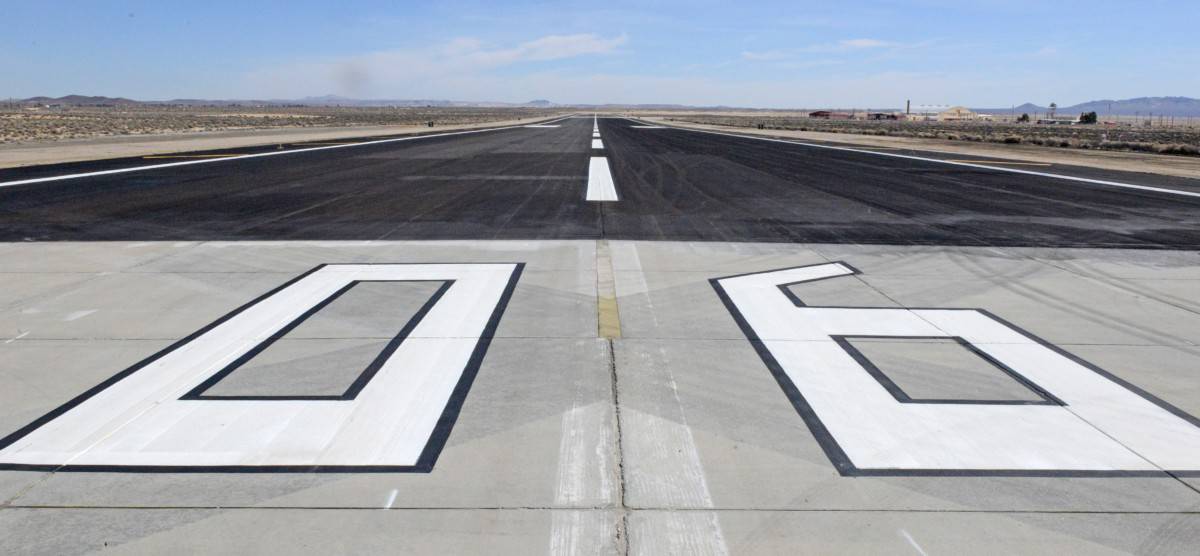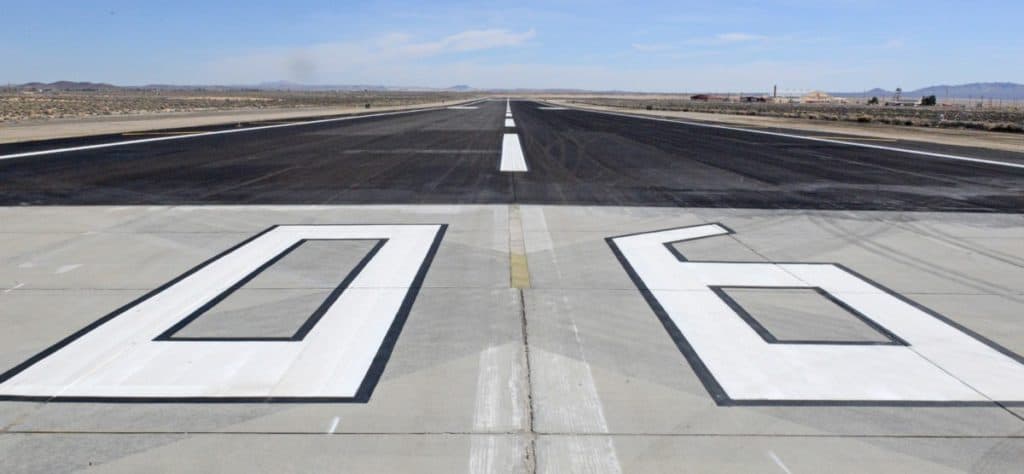
Global aviation can be incredibly complex, especially with each of the world’s 193 countries regulating the industry somewhat differently. But when it comes to runway markings and numbers, there is worldwide conformity so that pilots, who are consistently crossing international borders, can’t tell the difference, visually, between runway 27L (two-seven-left) at Philadelphia International Airport and London’s Heathrow Airport, or at any other runway in the world with a 27L designator. Accurate and well-marked runway designators benefit pilots during taxiing, takeoff, and landing.
Runway and airport markings are globally standardized in accordance with ICAO Annex 14, 5th Edition Aerodrome Design and Operations Manual to ensure every airport follows the same marking sizing, color, and layout conventions so pilots can instantly recognize where they can safely operate their aircraft.
Having a globally standardized marking system dramatically increased safety allowing pilots to instantly recognize the runway marking no matter which country they are operating in.
There is more to runway marking than you may think so read on to find out just what many of these markings mean and how they are used to transfer information to the pilots.
For operations in the U.S., the FAA has published an Advisory Circular stipulating all the requirements that an airport must meet when marking its aircraft movement areas.
If you wish to find out more you can find the AC Here.
The Runway Number Designator
These are the most common markings most people see when looking at aerial photos of an airport.
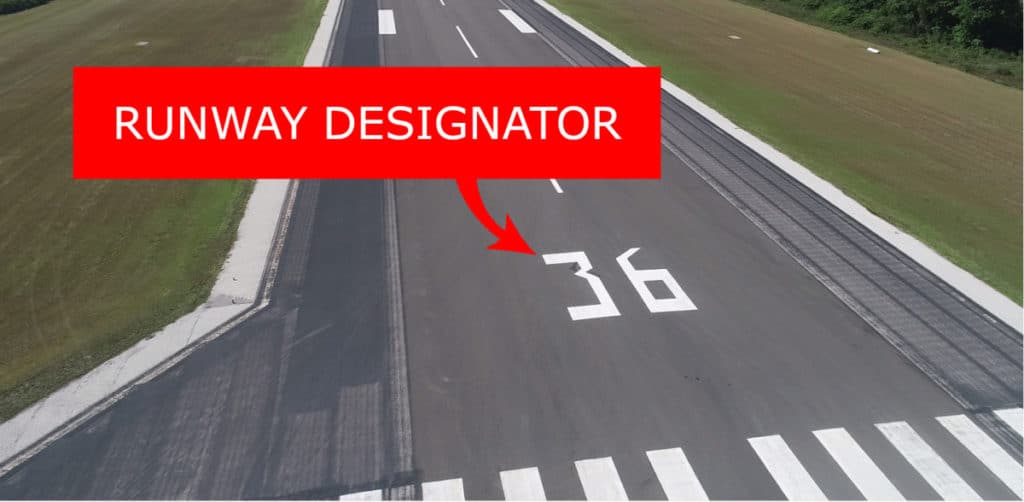
Based on 360 degrees in a circle, runway designator numbers can range anywhere from ‘1’, or ’01’ in some international locales, to ’36’, meaning directly toward the magnetic North Pole. The zero in the number of degrees is always dropped from the runway’s painted number, and the actual number is determined by rounding the exact heading to the nearest degree.
For Example:
A runway heading of 274° is rounded down to 270, or runway 27,
while a runway heading of 277° is rounded up to 280, or runway 28.
Many large airports have parallel runways, meaning two or more runways with the same designator heading. In these instances, the runways will be named 27L (two-seven-left) and 27R (two-seven-right). If it is a very large airport and has three runways all running in the same magnetic direction the center runway would get designated as 27C (two-seven-center).
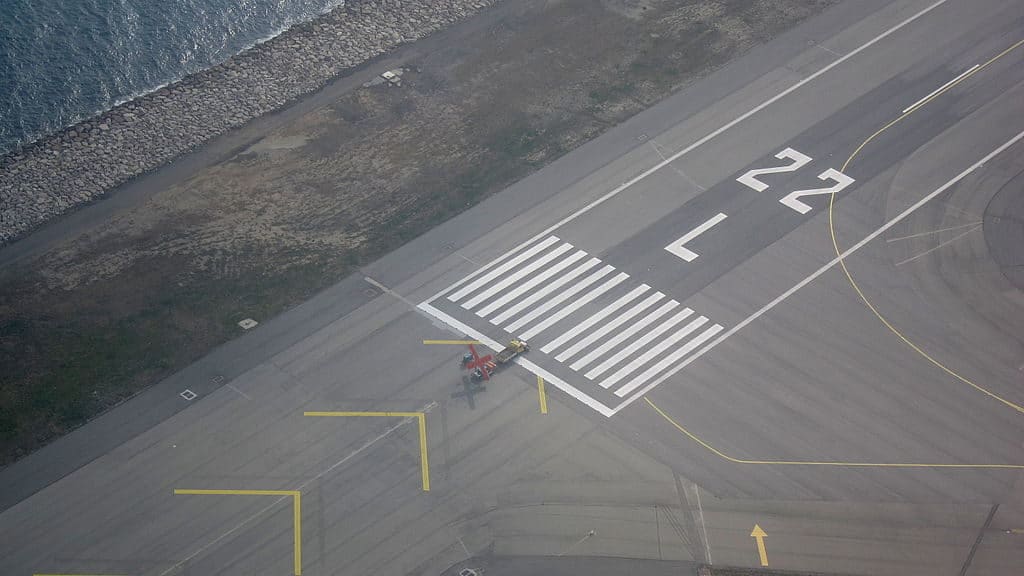
When communicating the name of a runway, pilots and air traffic controllers need absolute clarity in which runway is to be used. To do this they are taught a particular way of annunciation by always sounding out each part of the designator, rather than saying “runway twenty seven”, or “runway twenty seven left”, etc. they would say “Runway Two Seven Left”
In compliance with ICAO standards, runway number designators are Arabic numerals required to be 60-63 feet tall and painted in white on a sharply contrasting tarmac of black or dark gray. In the case of L, C, or R parallel runways, the letter is to be of the same height as the number and painted below (closer to the threshold) than the number.
Learn More…
Try These Articles:
* How Do Pilots Know Where to Taxi Around an Airport?
* Identifying A Runway – How Do Pilots Get It Right?
How Do the Markings Differ on the 3 Types of Runways?
There are three types of runways that pilots will encounter during their flying years. These are:
- Visual
- Non-Precision Instrument
- Precision Instrument
Small runways used at municipal airports may only contain the runway designator. As runways get larger and more complex in their landing system capabilities they require more markings.
A runway designator (number) and centerline are standard markings on all three runway types.
There is also a threshold marking, indicating the beginning of the runway on all precision instrument runways, as well as on visual runways that are used, or intended to be used by international commercial aircraft.
Threshold Markings

Threshold markings consist of multiple long, wide, white stripes, that are painted prior to the runway designator numbers, and L-C-R when appropriate. They begin 20 feet from the beginning of the runway, with the number of stripes on either side of the centerline indicating the runway’s width.
The wider the runway, the more stripes it will have at the threshold. Four stripes total, or two on each side, is the starting point for these stripes, indicating 60 feet in width. The maximum number of stripes, 16, is for a 200-foot-wide runway.
| # of Stripes | Runway Width |
|---|---|
| 4 | 60 feet or 18m |
| 6 | 75 feet or 23m |
| 8 | 100 feet or 30m |
| 12 | 150 feet or 40m |
| 16 | 200 feet or 60m |
These threshold markings give the pilot a quick indication of how wide the runway is and to make sure they are landing on a runway and not a taxiway when breaking out of the clouds or in poor visibility just before touching down. Depending on the category of runway the markings it has will differ:
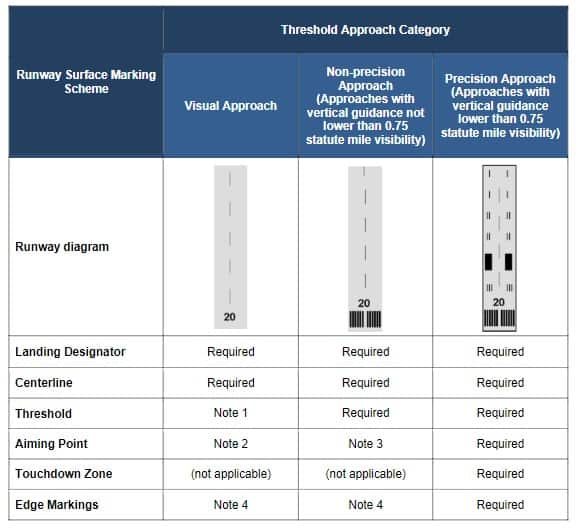
Notes:
- Required on runways serving approach categories C and D airplanes and for runways used, or intended to be used by international commercial air transport.
- Required on 4,200 foot or longer runways serving approach categories C and D airplanes.
- Required on 4,200 foot or longer instrumented runways.
- Used when the full runway pavement width may not be available for use as a runway

Join My Newsletter & Get Great Tips, Information and Experiences To Help You Become a Superb Pilot!
Runway Aiming Point
The two rectangular markings that are a single broad white stripe on either side of the runway centerline are called the Runway Aiming Point. These are typically located about 1,000 feet down the runway from the threshold on all precision instrument runways, as well as on visual runways of at least 4,000 feet in length that are utilized by jet aircraft.
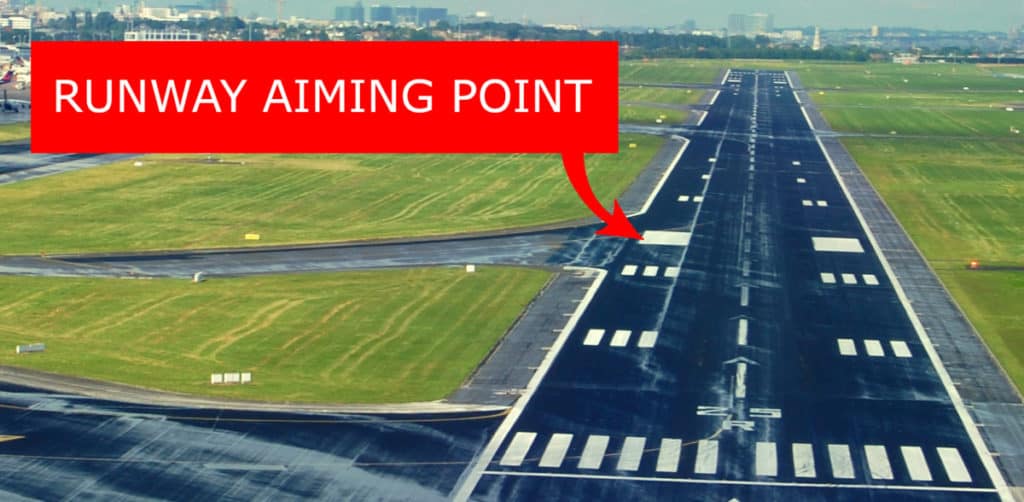
Just as they sound, they are an easily identifiable marker that pilots use to visually line up the approach path of the aircraft to ensure the aircraft touches down in the right location on the runway.
If the pilots find these markers too high in their window view their airplane is below the recommended approach path and they risk landing before the start of the runway, or if they find these markers too low in their window view they are above the recommended approach path and they risk landing way too far down the runway and not having enough runway left to stop.
Touchdown Zone
Unique to precision instrument runways is the Touchdown Zone. The touchdown zone is made up of groups of one, two, or three rectangular stripes that are arranged in pairs on either side of the runway centerline.
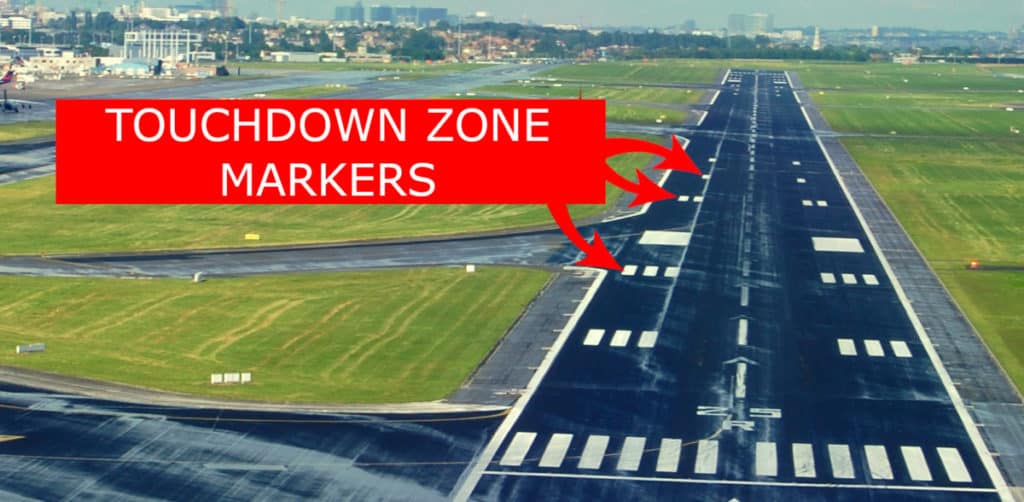
Original Image Source: Luckash
They provide pilots with distance information, spaced 500 feet apart, and are of especially critical importance during landings when visibility is limited, or an aircraft lands long. If the pilots are on the correct approach path and following the Runway Aiming Point markers the aircraft should touchdown within the Touchdown Zone.
What’s a Displaced Threshold?
A displaced threshold is an area of a runway used for aircraft ground movement but not landing. Aircraft can taxi into a displaced threshold for increased takeoff distance or roll into it during extended landing rollout. The displaced threshold is not built to withstand the heavy impacts of landing aircraft.
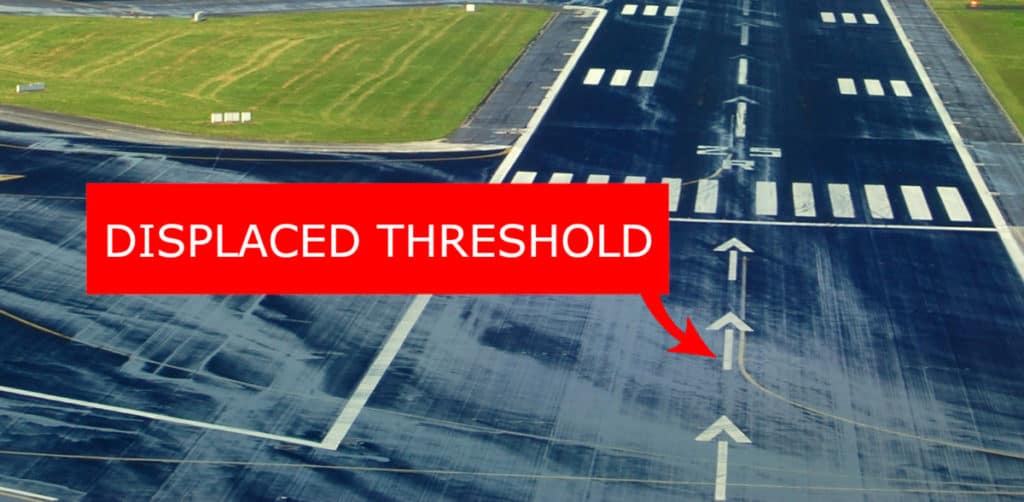
There are airports where the initial portion of a runway isn’t useable for landing, but it can still be used for takeoff rollout, or utilized for landing rollout when arriving from the opposite direction. This area of the pavement is called the Displaced Threshold, with specific markings to advise pilots.
The center stripe within a displaced threshold is arrow-tipped, directing the pilot to the nearby threshold. Pilots know that a displaced threshold means that the runway’s length is less than what has been published.
Additionally, a 10-foot wide threshold bar is painted across the full width of the affected runway just prior to the actual threshold, with multiple white arrows painted on the centerline between the displaced threshold and the runway’s beginning. White arrowhead chevrons can also be painted across the full width of the runway just before the threshold bar.
What Does it Mean When the Markings are Yellow?
In addition to all of the white runway markings, pilots will often come across yellow arrows, or yellow arrowheads along with a solid yellow line across the runway. This is called a demarcation bar, indicating that you are on a taxiway that is directly aligned with the end of an approaching runway.
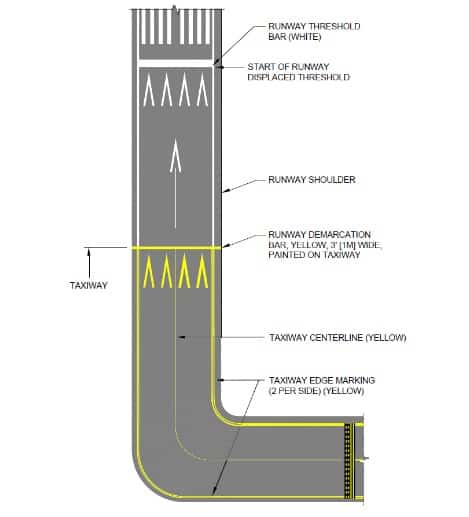
This isn’t a part of the runway, and the yellow color makes this abundantly clear. You won’t be physically on the runway until you taxi across the threshold bar, which is boldly colored in white.
Pilots will taxi up to the start of the runway and begin their takeoff roll once they have crossed the Yellow Demarcation Bar.
Why is There a Giant “X” at the End of the Runway?
A large painted white X at the end of a runway means that the runway is closed, and should not be used for any flight operations. Runways marked with an X are sometimes used as an additional taxiway but are not available for takeoffs or landings.
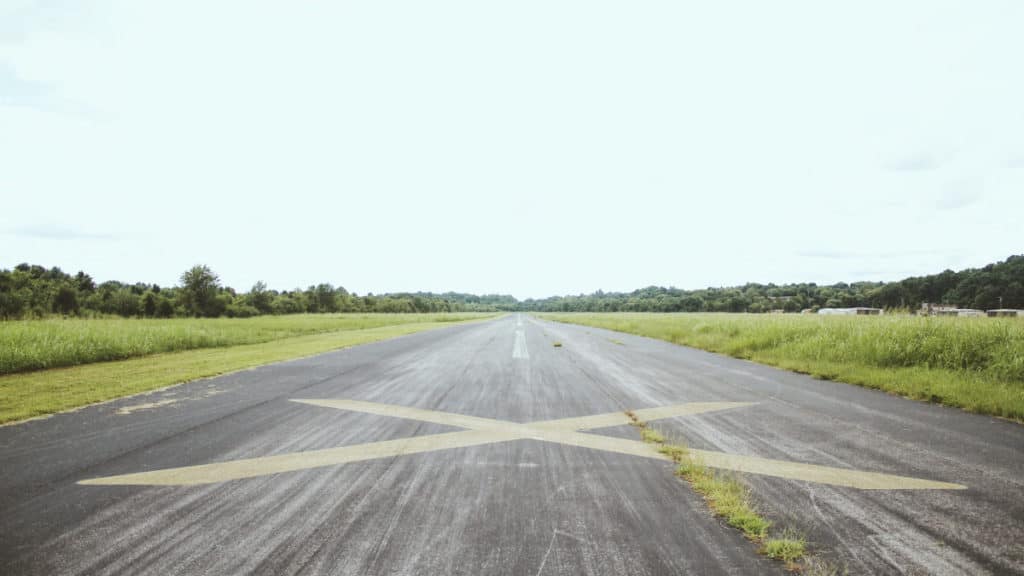
Often, airports deploy large, lighted X runway closure markers in addition to painting an X on the tarmac, so that pilots can clearly see that a runway isn’t operational during hours of darkness, especially if the runway is temporarily closed.
Typical temporary closures are for maintenance, repairs, total resurfacing, or when additional aircraft parking space is required during mass aircraft grounding like 9/11 or during COVID-19.
Learn More…
Try These Articles:
* Is It Illegal To Listen To Air Traffic Control?
* Planes Landing Sideways – Why Not just Land Straight?

